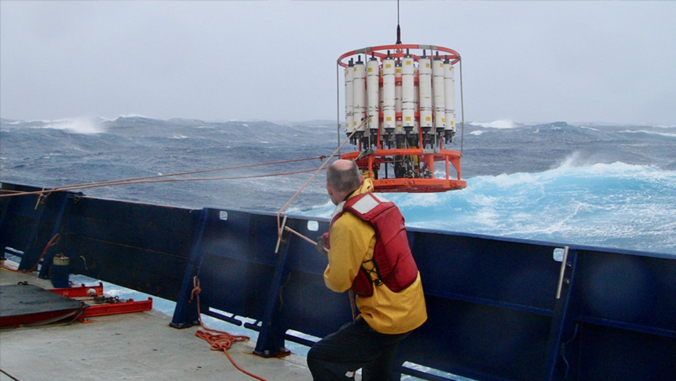
The ocean stores huge amounts of heat and carbon in a vast reservoir that covers 70 percent of Earth’s surface. Measuring changes in that heat content over time has been a subject of intense scientific research, with analyses growing more precise as observing systems expand and the duration of measurements grow.
In an article published in Nature Climate Change, John Lyman, a scientist at the University of Hawaiʻi at Mānoa’s Joint Institute for Marine and Atmospheric Research and Gregory Johnson, a NOAA scientist at the Pacific Marine Environmental Laboratory, analyzed four prominent ocean temperature datasets and found that throughout the past 52 years, the area of ocean regions showing long-term warming trends dwarfs that of regions showing cooling trends.
For 15 years, Johnson and Lyman have led an analysis of ocean temperatures for the annual “State of the Climate” report published in the Bulletin of the American Meteorological Society.
“Ocean warming is tightly linked to increases in atmospheric greenhouse gases concentrations, so global ocean temperature trends are an important yardstick for measuring climate change,” said Johnson. “We noticed that as the time-series of upper ocean heat content we were analyzing grew over the years, more of the ocean area was covered by a statistically significant warming trend.”
Warming trends grow steadily
Johnson and Lyman decided to step back and look at how temperature trends changed when estimated throughout varying time periods. To investigate those questions, the pair generated annual maps of ocean heat content anomalies in the upper 700 meters of ocean from 1993 to 2019 by combining sea-level data from satellite altimeters with ocean temperature data. They also analyzed annual maps of ocean temperature data from the upper 700 meters from 1968 to 2019 from three other research groups: NOAA’s National Center for Environmental Information, the Japan Meteorological Agency and the Chinese Academy of Science’s Institute of Atmospheric Physics.
For the 27-year period from 1993 to 2019, they found 53 percent of the global ocean exhibited statistically significant warming trends versus 3 percent of the ocean showing significant cooling trends. For the 52-year period from 1968 to 2019, the imbalance grew markedly: 72 percent to 79 percent of the ocean area showed warming, while only 1 percent to 3 percent exhibited cooling. When trends were estimated over shorter 5-year periods, the areas and imbalances were much smaller, with 24 percent warming and 17 percent cooling.
“As we increase the time period over which we estimate ocean heat content trends, the portion of the global ocean where we can detect warming trends steadily grows, while the cooling trends steadily shrinks,” said Lyman.
For more see School of Ocean and Earth Science and Technology’s website.
—By Marcie Grabowski

